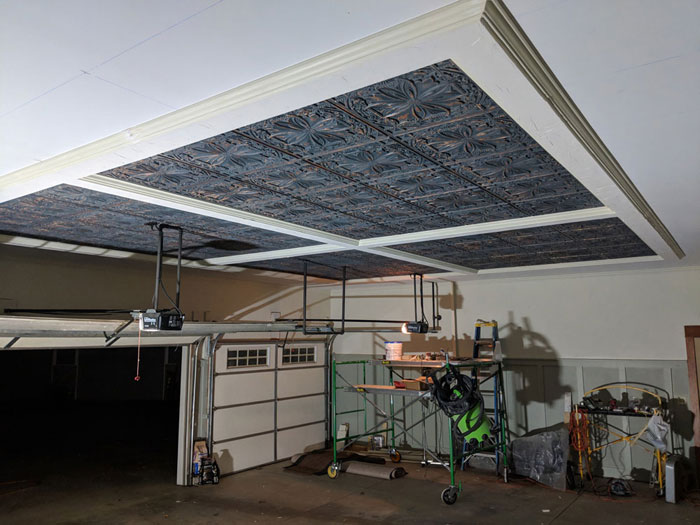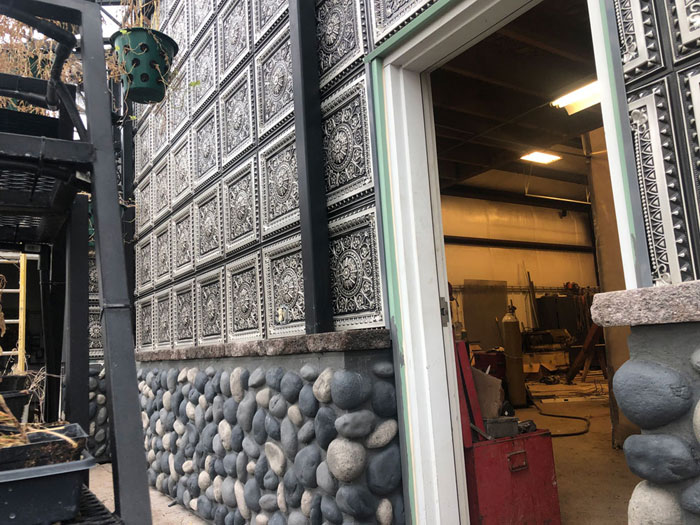Finish Your Basement with Drop Ceiling Tiles
Written by Milan Jara on 5th Feb 2019

Finishing your basement is the last step in making your house a home. Often, homeowners leave the basement until the very last minute to be finished for a multitude of reasons. If that’s you, you might feel like it is a private space that no guests venture down into, which makes it a low priority type of space. You might also feel like the basement doesn’t need to be finished because you never really use it yourself.
The truth is that finished basements tend to add resale value to homes, leaving more money in your pocket at the end of the day. That means that finishing your basement sooner rather than later could be the difference between a few thousand dollars on a closing in your favor.
One thing that turns so many future homebuyers off when it comes to basements is the ceiling. Sometimes, the ceiling can be exposed with pipes and wires running all along the top of space (which is unsafe and aesthetically unappealing all at the same time). That’s why finishing your ceiling with a drop ceiling, also known as a suspended ceiling, is one of the first things you should do in your basement finishing project.
Can You Install Drop Ceiling Tiles on Your Own?

If you want to get right the point, the answer is yes! Installing drop ceiling tiles along with recessed lighting in your basement is easier than you probably imagined. The key to installing these suspended ceiling tiles yourself is to know how to do it without making a few of the worst mistakes you could possibly make. Saving money is a great thing when it comes to home repair and renovating, but when the cost of what you would have spent on a professional has to be paid (and then some) after you’ve already attempted to do the work yourself, it’s not actually worth the attempt.
Tools You’ll Need

Without spending a great deal of time in this department, let’s look at the key tools you’ll need to successfully install drop ceiling tiles in your basement! If you don’t have some of these tools readily available in your toolbox or garage, you can rent some of the items from your local hardware store or chain hardware store. Some of the tools required may need to be purchased as the renting option might not be available. There’s no way around getting the tools you need. Otherwise, you’ll be spending hundreds (if not thousands) of dollars fixing the issues you created by not having the right tools. Always buy a few extra tiles, as they can be used as replacement tiles at a later date if needed.
Here are the tools you’ll need to install the drop ceiling tiles in your basement and make it quick and easy:
- Drill Eyelet Adapter – drill bit that eyelets fit into
- Utility Knife Blades – multiple needed for sharpness during the cutting phase
- Wire and Wire Hanging Eyelets – eyelets go to the floor joists and wire loops through the eyelet to provide support for the weight of the tiles
- 2’ Cross Ts – 2’x2’ tiles will need these but 4’x2’ tiles will not
- 4’ Cross Ts – run parallel to your floor joists and hook into your T-channel
- T-Channel – run perpendicular to your floor joists
- L-Channel – installed around the perimeter of the wall and then a few inches below your ceiling
- Drop Ceiling Tiles – no brainer – either flush mounts or reveals (total preference choice)
Now that you know the materials and tools you’ll need for this project, let’s talk about how to install the drop ceiling tiles the right way, the first time.
Step 1 – Get a Drop Ceiling Grid Designed
Install ceiling tiles can be tricky no matter if they are decorative ceiling tiles or not. The trick here is to have a plan in place before you start the installation process. Without a grid to tell you where to place the tiles, you will not know how many you will need or where they actually go that will require the least amount of cutting possible.
Start on the outside edges of the ceiling and work your way inwards. You want these tiles to be evenly placed so that there aren’t any discrepancies with sizing.
If this is not something you think you can handle on your own, there are plenty of websites that can help you digitally design the plan. Make sure to pay attention to any special features your room has like support pillars or cutouts. This will change the way you design your grid.
Step 2 - Time to Put in the L-Channel
This is the fun part. Decide how much of a drop you want from the actual ceiling. Take your measuring tape and measure from the floor joists down to the spot you want the tiles to go. Mark the location on the wall with self-tapping drywall screws. Put the L-Channel on the wall.
The corners can be a bit tricky. For exterior corners, overlapping the L-channels and cutting just one of them on a 45-degree angle will give it the look of a mitered corner. This is just a more polished look. Interior corners are not that much different since they can either be overlapped or pushed together at the ends.
Step 3 – T-Channels Are Next
We know from our list of materials and tools that the T-Channel runs perpendicular to the floor joists. The main T-Channel pieces will actually be supported by the L-Channel pieces and the eyelets and wire in the middle. You’ll want to give it at least 2–4 feet of space every third joist.
The wire should be running loosely through the T-Channel and the eyelets. You’ll want to make sure that the wire is strung tightly from wall to wall and in line with the L-Channel. Pull those individual wires tight again and bring the T-Channel in line with the string. If the wire isn’t tightly wrapped, it could become loose with the weight of the tiles, which could cause a huge problem in the future.
Repeat this process with the T-Channel spaced 4’ apart until all of the T-Channel is lined up.
Step 4 – Install the Cross Ts
This is actually the easiest, and fastest, part of the installation process and thankfully the last. You should have 4’ Cross Ts unless you have 2’x2’ tiles in which case you can use 2’ Cross Ts. Start with the full Ts and then move to the outside edges. Cut each T to the desired size—and remember to cut a bevel at the wall to avoid any interference with the actual wall itself.
Drop in a couple of full tiles to help the grid square up a bit. It is highly recommended to do this before you start cutting the edge tiles because you want the grid to be as square as it can be.
Be aware that you’ll need to make special cuts for other special instances like cutouts, pillars, or lights.
There you have it. You’ve just installed your drop ceiling tiles in your newly finished basement!